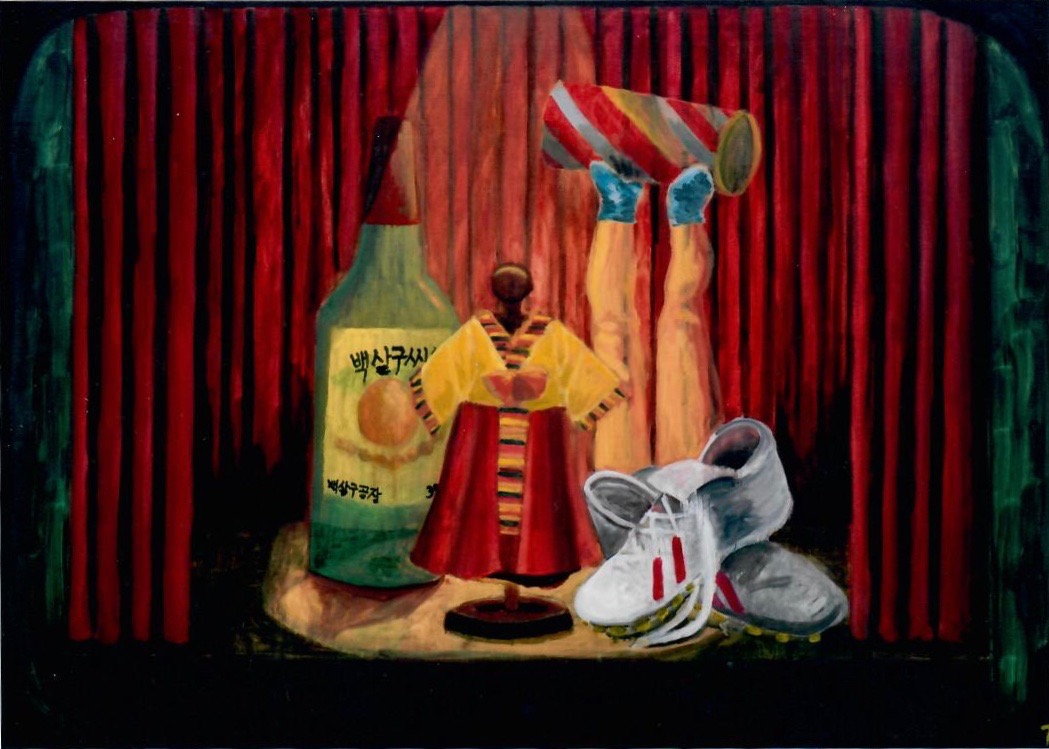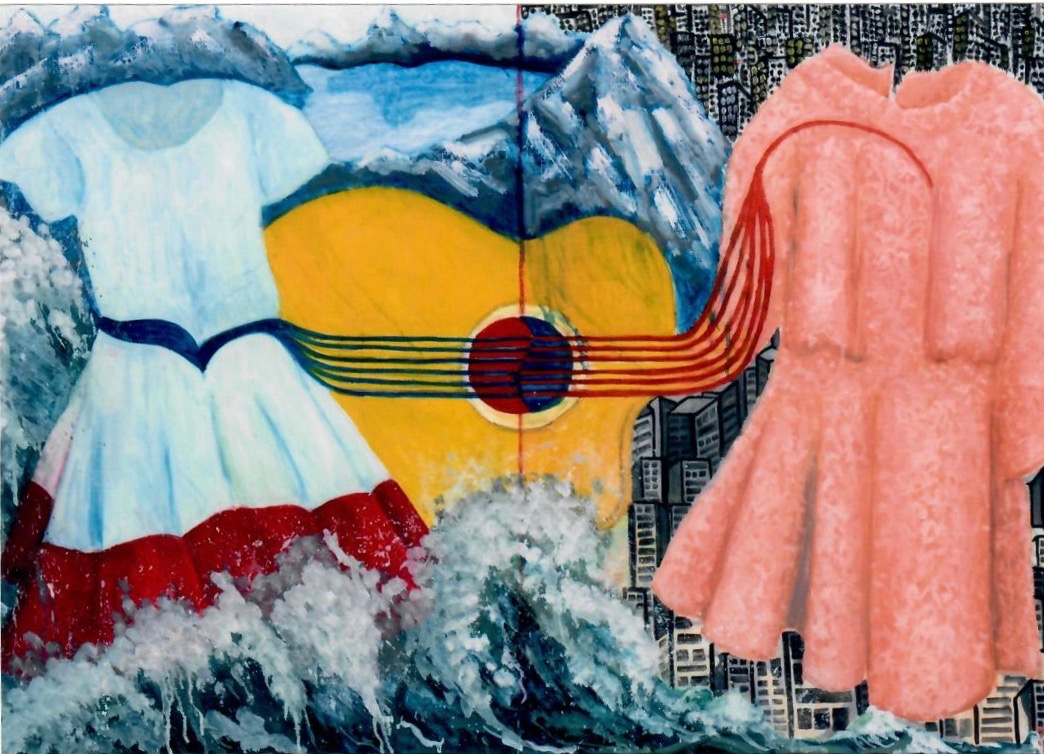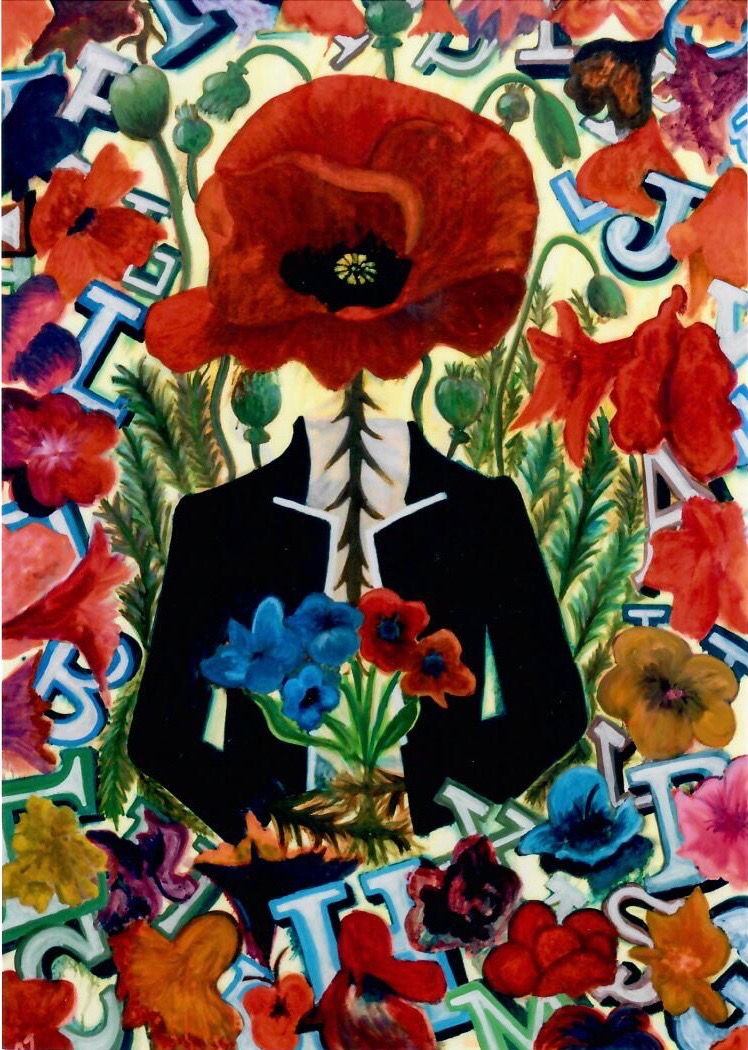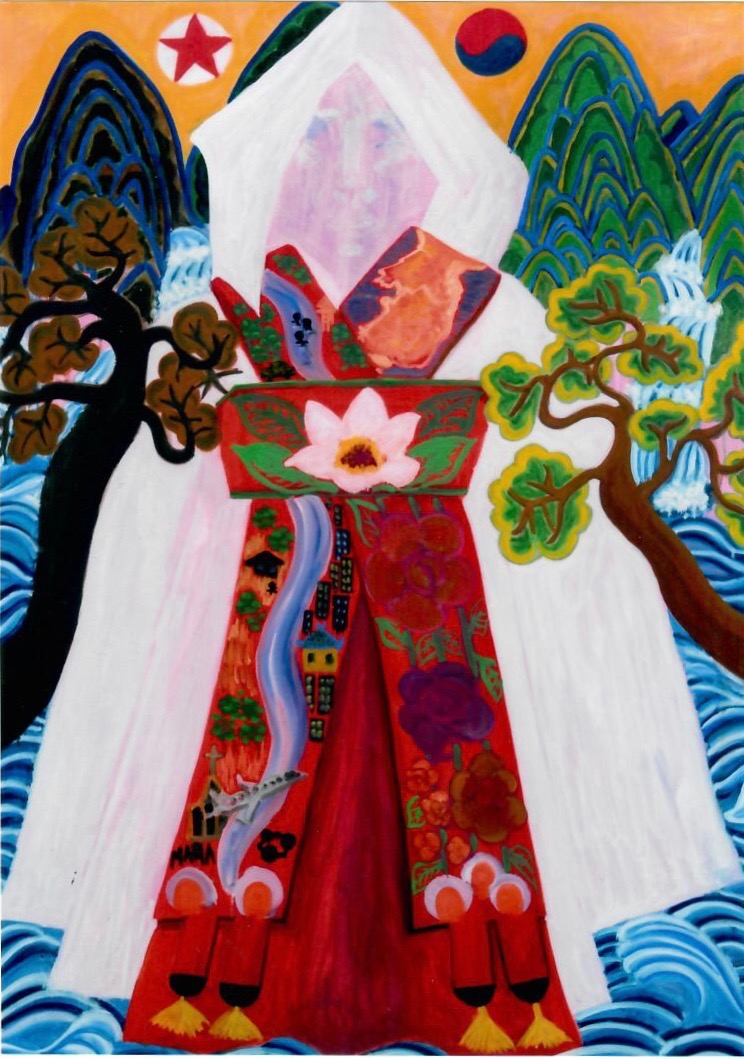This may be stating the obvious, but 2017 had been especially riddled with one terrifying incident after another, enough to keep people anxious and reaching for sleep aids or mood stabilizers for the next decade, at least. One of the most sensitive global conflicts that you’d imagine would be at the top of the federal government’s to-do list, is America’s relations with North Korea. Reports of nuclear testing progress in the northern region of the Korean peninsula and the ongoing reckless “whose-nuclear-button-is-bigger” dialogue between the leaders of the two nations has put the topic of North Korea at the forefront. US relations with North Korea are ongoing and complex with factors that go beyond current nuclear issues as the relationship has been tenuous since the Korean War. With the increasingly tense provocation between these countries and Western media’s tendency to focus reports on North Korea’s nuclear weapons development, re-education camps, and political prisoners, what isn’t reported as frequently in mainstream networks is what is coming out of the peninsula and that is the North Korean escapees, refugees and the humanitarian efforts aiding in their safe passage. One of the main problems one may run into with bringing this refugee crisis more exposure is that there’s a substantial risk of possibly endangering these refugees. Eunice Kwon, a budding painter, had the unique opportunity to interview some of the resettled North Korean women and interpret their stories into her latest clothing-themed project, ‘Painting the Identities of North Korean Refugees.’
Kwon is a Korean American artist who grew up in a bilingual and bicultural environment. She’s the eldest of three and born in Alabama before moving to Illinois and then to Fresno, California when she was about to start eighth grade. As many Asian Americans may relate, the 29-year-old painter juggled the dynamics of family or parental expectations with pursuing a career or path that was satisfying and meaningful to her. She ended up working with Liberty in North Korea and although the work was purposeful and momentous, her creative side yearned to express and be utilized. Prior to the non-profit job, she’d known that she wanted to do something creative with a social justice context in mind but didn’t quite know how she would do it. About two years ago, Kwon got her Associates Degree in Art from Clovis Community College, where she found that she had a knack for painting. That eventually led her into developing a painting series project on North Korean refugees in a way that gave an intimate and humanized look at survival stories and perspective on living conditions in life prior to resettlement and after. Through her acquired connections from Liberty in North Korea, she interviewed four North Korean refugee women who had settled in South Korea. Amongst the thousands of North Koreans fleeing yearly, a majority them escaping are women because, in a patriarchal dominated regime, women have a lower status than men so they are not as heavily monitored, making it easier for them to slip under the radar. This passion project provided her the spark to take her art beyond a hobby to a dedicated, passionate, creative pursuit. I sat down with Eunice and we discussed her latest project with North Korean refugee women, Korean cultural observations, and future projects.
What is your background in art and how you were introduced?
I was never formally introduced to art. I had to go after it myself. I made that leap forward into visual art when I recently quit my job and went back to college and got my Associates degree. My family was very focused on academics and music when I was growing up. My mom had my brother, sister, and I be classically trained in music. I played viola. It’s pretty much the typical story of most Asian immigrant kids growing up. You play some sort of instrument, usually something like piano or violin.
What was the job you quit?
I was a field coordinator for the non-profit, Liberty in North Korea, that is based out in Long Beach. There are certain things I can’t divulge because of confidentiality and there are potential security risks but I was there for a while and when my contract ended and I thought this was probably the only time I would have to figure out how to get involved with art.

What can you divulge about the non-profit?
A lot of North Koreans escape to China for better economic opportunities and generally, a better quality of life. North Korea is incredibly oppressive so they can’t live a necessarily “normal life.” They don’t have access to standard technology that the rest of the world uses unless you find it through underground black markets. Many North Koreans that are escaping have settled in China but most of them have an ultimate goal of getting to South Korea because that is where they can find freedom and be amongst other Koreans.
Are you able to speak about what you’re duties were for the organization?
Yes, so North Koreans that want to leave can apply for asylum. These asylums are in multiple countries like various European countries, South Korea, Southeast Asian countries, and the US. We actually have a pretty vast North Korean community here in Los Angeles. To get to these countries, they travel through China by
underground networks of people who will take them from one [checkpoint] to another until they get to their final destination. As a field coordinator, I was meeting with them and helping them get to their next point as well as performing certain care-taking duties like informing them of resettlement opportunities and helping them get in touch with family members.
I think the reason I became involved with Liberty in North Korea is partly due to being a kid of South Korean origins and being raised with the awareness of the ongoing crisis with North Korea. Growing up, my parents would keep up to date with Korean news so reports on North Korean relations and incidents were always part of my environment and in the conversation. I think it’s really interesting that a lot of Korean Americans feel
quite motivated to participate in humanitarian efforts concerning North Korea. Being aware of these issues and injustices growing up is what fueled me into getting involved with humanitarian work.  You mentioned earlier that there’s a strong inclination for many Korean Americans to help or aid in Korean based humanitarian efforts. What’s your perspective on that interest and participation in South Korean and North Korean culture and current events?
You mentioned earlier that there’s a strong inclination for many Korean Americans to help or aid in Korean based humanitarian efforts. What’s your perspective on that interest and participation in South Korean and North Korean culture and current events?
It’s fascinating because a lot of South Korean youths don’t seem to care as much about these relations the way Korean Americans do. Korean Americans and a lot of the older generations in Korea are interested in the unification of the peninsula; I wonder if it has something to do with wanting to connect to their heritage by actively participating in creating a better future. A lot of Koreans in America are Christian as well and in Christian organizations, there’s a lot of relief efforts or goodwill acts taking place so maybe it has to do with something like that too.
How did art come into the picture and how did you integrate it with your already growing interest in humanitarian and social justice work?
I think I’ve always known I’ve had an interest in art when I was pursuing my non-profit career. I kept trying to figure out some way to become more involved with it and this idea just kind of culminated from that. When I came back from a Southeast Asian trip last year and moved back home with my parents. My sister encouraged me to come with her to Clovis Community College and see what art classes were on schedule. I found painting through that and didn’t realize it was my “thing.” It kind of just became my preferred medium while I was taking some courses and my professor, Stephen Dent, really thought I had a knack for it.
Where do you tend to draw inspiration from for your art?
It’s difficult sometimes. I hope in the future I can be disciplined enough to be able to create projects faster with some sort of theme, but as of right now I’ve been retelling the stories of others. I think in terms of inspiration, what triggers it for me is a combination of current events or injustices mixed with my own history, trauma, and family and immigrant experiences.
Can you elaborate on your process for creating your ‘Painting the Identities of North Korean Refugees’ series?
So I had a personal identity assignment in one of my art courses and I painted an image of a Hanbok with elements of my life and who I am on it. My professor really liked it. Then I realized that classroom experience is great, but I want to go out in the real world and try my hand in art out there so I thought I would kind of meld this together with some sort of project I wanted to do. My boyfriend told me about Kickstarter, which I had known about before, but never really connected that it was something I could utilize. Originally, I had wanted to do a project on the comfort women in Korea.

What are comfort women?
During WWII, Japan occupied a lot of Asia, Korea was one of those places, and the Japanese military took a lot of these young women and basically forced them into sex slavery and called them comfort women. Japan still has not fully acknowledged that, though I believe they did a one-pay out of reparations a few years ago to South Korea. I’m not entirely sure if they did the same for the other Asian countries they invaded. It’s still a very controversial topic since many believe that a payout is not sufficient enough recognition of wrongdoing so in front of the Japanese embassy in Seoul, every Wednesday morning, the remaining comfort women hold an all-day protest.
My initial idea for the project was to create traditional Korean dress paintings but it would’ve taken too much time since I’m not the only artist contacting them about projects and I’m sure they’re very guarded. They have people protecting them from strangers trying to ask them to do projects. A lot of the remaining comfort women live in their own housing community and keep a really tight circle. So the point I’m trying to make is that I realized it was going to take too long. Then I remembered that I have his preexisting connection with North Korean work so why don’t I just create a project around that to kind of explore North Korean identities after resettlement. This entire project is based around clothing because clothing is so inherently a part of who we are
individually. We all look for different characteristics and traits in clothing that reflect our personality. If we get down to the basics of clothes, they keep us warm and protected so it’s essential.
What are some stories and lessons you learned from these women that you talked to?
I think what’s really interesting in society today, is that people tend to expect a happy ending in situations that involve overcoming anything traumatic; like a Hollywood-painted ‘happily ever after.’ It’s true that for these refugee women, living conditions are far better compared to what it was in North Korea, but they struggle with adjusting to life in an urban and progressive part of the country. It is daunting and many of them are taken advantage of because they don’t know how society works and they get scammed for money and labor. For some, they can’t say for certain that life is entirely better because resettlement comes with its own disadvantages. In North Korea, local communities are really tight-knit but it’s not really like that in South Korea. That’s really isolating for North Koreans who are used to people knowing everyone on the block, but in the South, people don’t make an effort to get to know you. There’s a lot of discrimination against North Koreans because as soon as they open their mouths, their dialect gives them away and South Koreans tend to associate them with negative labels, like a scammer or a con artist.
South Korean media portrayal plays a huge factor in that stereotype. It makes out North Koreans to be really backward, naive, and like ‘our strange cousins to the north.’ I believe in the past, a lot of North Koreans came into South Korea and were involved in shady business. In retrospect, that makes sense since as refugees, they had limited resources, and needed to survive so they might have gotten involved with some crooked people. However now, North Korean’s know to assimilate quickly or resettled life might be even harder for them. You’ll see them trying to adopt a South Korean accent and they immediately change their appearance to look more South Korean.
What’s the standard look in South Korea?
For women, it’s being thin, long hair, preferably big eyes, white skin, small face, and trendy. I don’t think this will paint South Koreans in a good light but they are so image focused. You have to look good when you leave the house. I think when Korean Americans start planning a trip to South Korea, they think, “Okay, I need to lose weight, dress better, take care of my skin, start practicing makeup before I go.” We start making a to-do list and I’m definitely guilty of that. I go there and I immediately feel the need to dress nicer, put on a little more makeup, and essentially be more South Korean style-wise.
There’s quite a bit of media attention on the current situation between America and North Korea, or specifically there leaders. What’s something you hope people would understand about the North Korean people through your art and travel observations?
I’m really grateful for the North Koreans who have escaped or are escaping, telling their stories, going around the world talking at speaking engagements and being willing to open up. A lot of their stories are really traumatic. Some have lost family members during the escape. They’ve lost contact or some have been shot by guards or drowned in the river. Some have had family members die in front of them. There’s an abundant amount of similar stories and the quality of life for them in North Korea was so low for so many of them that I would imagine, if you were in their shoes, you wouldn’t want to talk about those things. Yet they are making the effort to do so in hopes that someone would listen and their story may affect change. The media tends to really focus on North Korean government, politics, and nuclear weapons which can dehumanize them, but there are incredible stories of survival coming out from all the refugees that have escaped and who are living unique and incredible lives and those deserve attention too.
What are common themes that you picked up from interviewing these women?
Typically I would hear a lot about loneliness. Even though their situation now is comparatively better, your home is still your home. That’s what you grew up with; the food, people, and family you know. I interviewed four women and each painting represents each of their unique stories. Except, I ended up creating a two-part piece
with the first woman I interviewed, Ji-Eun. I sat down with them and I had them tell me about their lives prior to the resettlement and their lives presently. I interpreted visuals from what I got in their story or what stood out to me.
 I won’t make you break down every piece, but will you explain Ji-Eun’s painting?
I won’t make you break down every piece, but will you explain Ji-Eun’s painting?
Sure, Ji-Eun was the first one to agree to work with me and so this [painting] with the warthogs represents Ji-Eun’s prior life in North Korea. She’s the eldest of two sisters and her father passed away when she was a teenager with some type of terminal disease. He wanted to get better naturally so he moved the family to the mountains. When he passed, she became the sole provider for her family. They had no way of really making a living so to keep the house warm, she would hike alone through dense birch forests of the mountains to gather firewood and would frequently spot warthogs. That element stood out to me in her story. Life in North Korea became increasingly difficult and she started hearing rumors of work or money opportunities in China. She escaped with a friend wearing the clothes painted in this piece. She didn’t tell her family and upon arriving, Ji-Eun and her friend were both sold as brides and she was held in captivity for several years before escaping to South Korea.
Part two of the painting is indicative of her life in South Korea now. She first arrived when she was about 20-years-old and soon met a fellow North Korean whom she eventually married. She has a really successful life now. She and her husband are currently attending one of the top three universities in South Korea studying North Korean relations and politics, own and operate their own insurance company, and have two kids. They are poised to become mentors in the North Korean refugee community by working to form stronger community ties and finding solutions for North and South relations. [Ji-Eun] likes to dress sharp and I saw her wear this blazer several times so I thought this was a good symbol for her. One of her biggest goals right now is to improve her English so I thought [the letters] work with the painting. She was eventually able to arrange for her mom and sister to join them in South Korea since she’d been settled for a few years at that point and one of the first things her mom did was buy her flowers for the first time. Her mom had never done that before and this is sort of like a
role reversal because it tends to be the children that would give gifts to the parents but this time her mom did.
 What’s the story behind this one with the rope and intricate sash?
What’s the story behind this one with the rope and intricate sash?
Okay, so this is Eun-Hye, the fourth and last woman I interviewed. Her story is truly unique. So, for background, forced marriages are really common trades in North Korea and China. A lot of North Korean women would find themselves kidnapped or sold to Chinese men out in the countryside of China, or a lot of women would make agreements with these men in order to secure escape and safe passage out of North Korea. En route to China, they somehow got separated from the youngest daughter. Eun-Hye and her eldest were forced to stay in China via forced marriage and they started attending a Catholic Church. Eun-Hye started experiencing strange health problems despite having been exceedingly healthy. Her priest told her, her health issues were spiritually related and a sign of a calling. She has spiritual abilities that have been suppressed and if she keeps denying them, it would likely cause her more pain. The priest said that he could arrange a way to get her and her daughter to South Korea. When they resettled, she started actively training to be a shaman in a traditional spiritual practice called Moodang. Once she took on this new path, all her health problems disappeared and she was in much better health. The dress is a ceremonial robe worn by Korean shamans and the sashes of these robes typically are adorned with flowers and other natural elements, but I drew their journey basically.
So there’s this cable TV show called “Now On My Way to Meet You” where a lot of young attractive North Korean women go on and discuss their stories and demonstrate North Korean culture through performances. Eun-Hye’s eldest daughter is really pretty, got on the show, and talked about how she lost her younger sister. Somehow word got around in China and an acquaintance of the younger daughter happened to see that episode and told her. The youngest got in touch with the producers of the show and they dedicated an episode to the family’s reunion. This brought widespread attention to the struggles North Korean women endure in China. The whole family has been resettled in South Korea for close to 10 years now and are thriving. The eldest daughter embarked on a successful singing career, the youngest is a career woman now, and Eun-Hye continues her work as a shaman while also taking care of her grandchildren.
Do you have any projects you’re working on currently or thinking of doing for the future?
I’m hoping I can find my way to a more dedicated creative project work schedule or job in the future but in the meantime, I have been looking into some scholarship-like fully funded programs for storytellers and artists. This time around, I think I want to explore stories and lives of North Koreans that have resettled in Los Angeles.
To learn more about Eunice’s work with the other refugee women on the project and to keep up to date with future projects check out her Kickstarter, and Instagram @tomoyopop.
